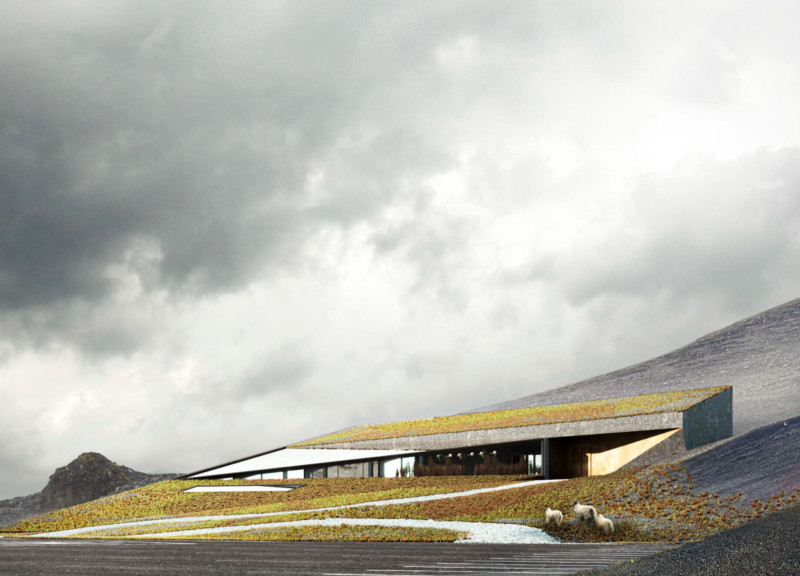5 key facts about this project
The Iceland Greenhouse Restaurant, designed under the concept of SLAB, is located in the captivating landscape of Iceland, serving both as a restaurant and a greenhouse. The design focuses on blending with the natural surroundings, specifically incorporating views of Hverfjall Volcano and Mývatn Nature Baths. Its core idea is to create a space that connects architecture with nature, enhancing the dining experience and agricultural practices for the benefit of visitors.
Building Form and Integration
The building’s shape follows the slope of the land, allowing it to blend into the environment. This architectural decision improves airflow and enhances natural ventilation throughout the interior. The roof is angled to maximize sunlight exposure, an important consideration in a region with variable weather. Large windows are placed strategically to frame outdoor vistas, strengthening the relationship between the inside and outside spaces.
Functional Layout
Inside, the layout is designed for both efficiency and comfort. The ground floor encompasses a reception area, cloakroom, and multipurpose hall, along with various service spaces for staff. This arrangement ensures a smooth flow of operations while making guests feel welcome. The restaurant section is open and airy, providing diners with clear views of the landscape, which encourages interactions with the natural environment.
Sustainability Features
Sustainability is a key element of the design, reflected through various energy-efficient features. There are cold air and warm air channels incorporated to aid in natural climate control without relying heavily on mechanical systems. A thrombus wall with glass panels allows natural light to penetrate while enhancing thermal performance. Dark concrete is used to retain heat, which contributes to overall energy efficiency. The green roof aids insulation and manages water drainage effectively.
Energy Strategies
Geothermal energy is an essential aspect of the restaurant's sustainability approach. It provides a renewable energy source that lessens the building's negative environmental impact. The design also includes a rainwater collection system, further improving water efficiency. By blending these sustainable strategies, the restaurant ensures that both its culinary offerings and agricultural practices support environmental health.
The design emphasizes a connection to the natural world, highlighted by large openings that allow light to flood the interior. This creates a welcoming atmosphere where diners can enjoy meals while taking in the beauty of Iceland.






















































